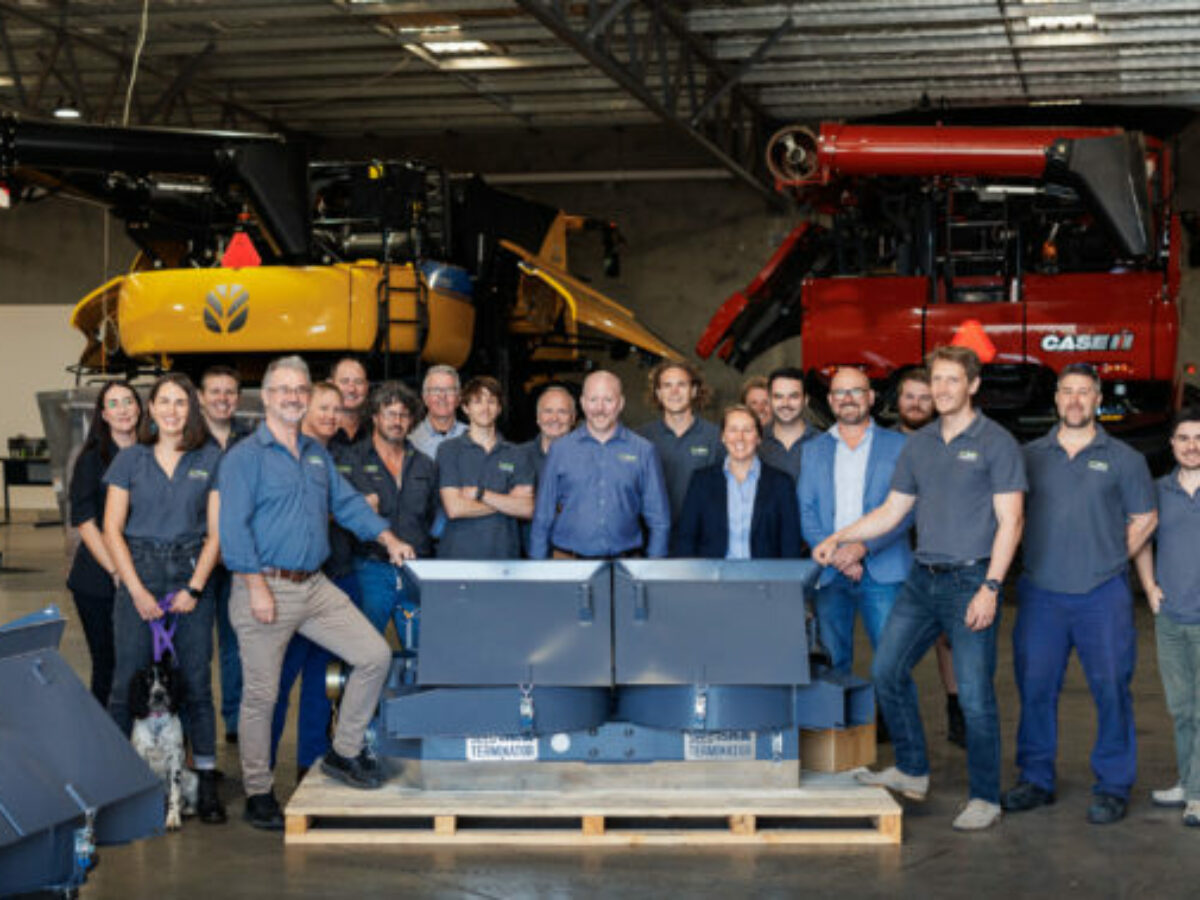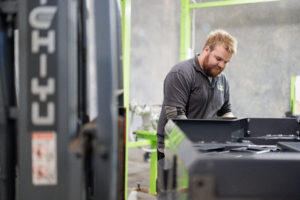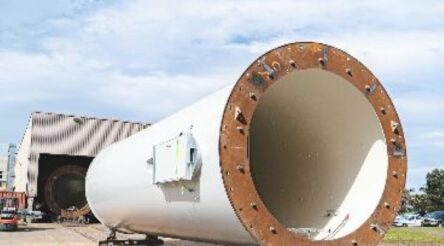Celebrating Australian Made: Local ingenuity walloping the world’s weeds

In the final day of our two-week Celebrating Australian Made series, @AuManufacturing looks at Seed Terminator, a company whose machines fit onto combine harvesters and play a role in weed control for crop farmers. By Brent Balinski.
“Chaff milling” is a local invention aimed at controlling weeds, crushing their seeds to smithereens to make them unviable, rather than poisoning them with herbicides.
According to an article on the subject last year in rural publication The Weekly Times, the concept is “up there with the stump jump plough or the Sunshine harvester in terms of Australian ingenuity” and offered by four brands here.
One of these is Seed Terminator, which got its first pilot machines into the field in 2016.
It was founded by inventor Dr Nick Berry – a farmer and engineer, who studied mechanical weed destruction for his PhD – and uncle Mark Ashenden.
The Adelaide company’s machines sell for about $110,000, retrofit onto several brands of combine harvester, and use two hammer mills driven by a harvester’s engine to turn seeds into a type of flour that then functions as a mulch and soil improver.
Last month Seed Terminator announced the sale of its 500th unit, with export orders beginning to build. There are currently eight machines in service in Canada, three in the United States, and in excess of 15 in Europe, according to Marketing Manager Kelly Ingram.
Herbicide resistance and a possible ban on glyphosate in Europe point to the potential of their milling solution overseas, she believes.
“Obviously Australia is important, but we’re not in the top ten grain production regions globally,” Ingram tells @AuManufacturing.
This nation’s production represents about 3 per cent of the world’s wheat.
Seed Terminator chases summer around the world for research and development purposes, with different harvest windows at different times helping accelerate tech development and improve their understanding of different crop conditions.
“It gives you an opportunity to ground break technology potentially overseas so that it’s ready and paddock-proven once you get to Australia in the same year,” explains Ingram.
While it looks abroad for new customers and R&D, the company’s supply chain is hyper-local, and it recently brought assembly of some of its models in-house to its Lonsdale factory.
“All of our major components other than a gearbox and a monitoring system are manufactured and made in Australia. We’re really proud of that,” adds Ingram.
Most suppliers are around Adelaide, including high-end precision machining and coating services.

Advanced coatings for rotors has become an important element for Seed Terminator’s impact wheels, the core but not the only method for killing seeds. (These are obliterated by four modes of action: crushing, shearing and grinding, as well as impact.)
Sandy soils mean the inside of mills running at 3,000 RPM turns into “basically a sandblasting environment,” says Ingram.
“Which is why we put so much effort into making our equipment aerodynamic, making sure it’s got hard-facing and tungsten coatings on areas that are high wear for those kinds of conditions,” she adds.
Unsurprisingly for a company that relies on capable local suppliers, it is keen to see manufacturing strengthened, and to grow as a contributor to the Australian economy.
“Obviously with the issues around Covid and shipping and the cost of inputs and everything from food to steel and everything else – I guess we haven’t really seen the end of it, have we?” says Ingram.
“But having stuff locally made sort of future proofs our country to a certain extent for some of those basic necessities that everyone needs.”
Pictures: supplied
![]() @AuManufacturing’s editorial series – Celebrating Australian Made – is brought to you with the support of the Australian Made Campaign Ltd, licensor of the Australian Made logo. For more information about using the logo, visit this link.
@AuManufacturing’s editorial series – Celebrating Australian Made – is brought to you with the support of the Australian Made Campaign Ltd, licensor of the Australian Made logo. For more information about using the logo, visit this link.
Subscribe to our free @AuManufacturing newsletter here.
Topics Analysis and Commentary
@aumanufacturing Sections
Analysis and Commentary Awards Defence Manufacturing News Podcast Technology Videos










